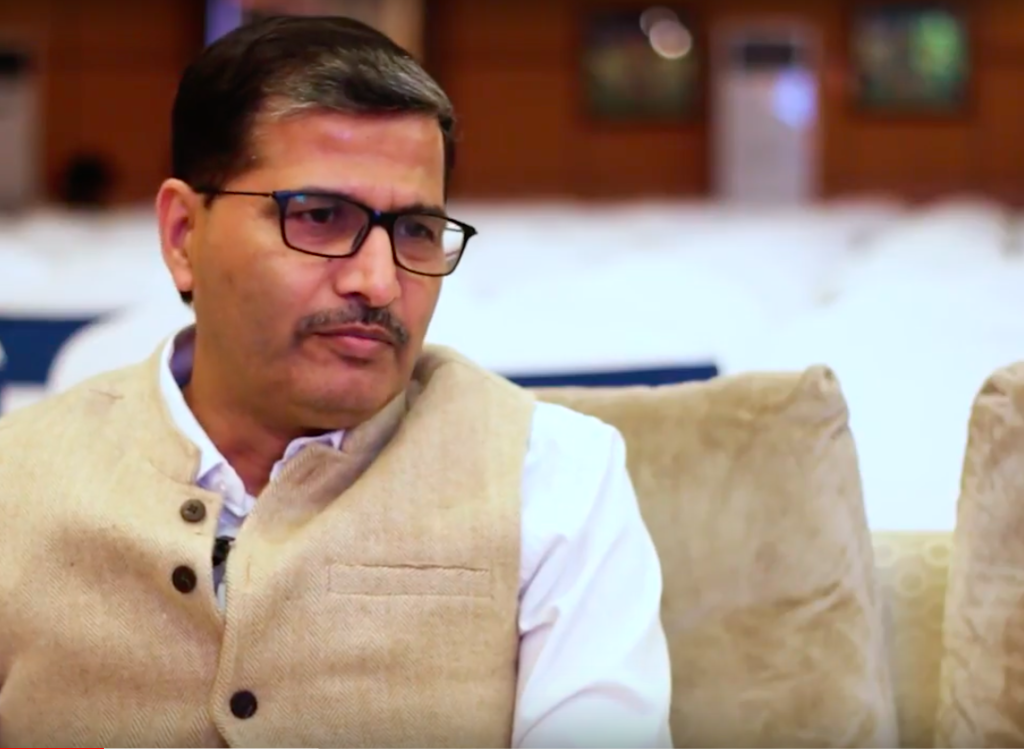Challenges on the railroadBy K V Priya Posted On : August 25, 2017 in Business & Politics , News - India & You , New Delhi
Handpicked by Prime Minister Narendra Modi for the post of Chairman, Railway Board; does Ashwani Lohani have it in him to change the Indian Railways for the better?
Ashwani Lohani assumed charge as the chairman of the Railway Board amid two back-to-back rail accidents making ‘safety’ a casualty. On August 19, the Kalinga Utkal Express derailed near Muzaffarnagar in Uttar Pradesh, killing 24 people and injuring scores of passengers. On August 23, nine coaches of the Kaifiyat Express derailed near Auriaya in Uttar Pradesh injuring over 70 persons.
Can Lohani turn around the Indian Railways?
India has the fourth longest system of railways in the world. It is operated by the state-owned Indian Railways and includes an operating route length of more than 65,000 km. The network carried about 23 million passengers and hauled nearly 3.02 million tonnes of freight, every day, in 2015.
A turnaround expert
Before being appointed as Railway Board Chairman, Lohani was the chairman of the national carrier, Air India, since August 2015. Hit by a pilot strike, issues related to the Air India–Indian Airlines merger and low staff morale had plagued the carrier. Lohani changed all that. Within a short span, the national carrier posted an operational profit in 2015–16 for the first time after its merger. A qualitative improvement was visible in its passenger services, all of which improved its public image.
It also expanded to various domestic and international destinations. During 2016–17 the airline managed to increase revenue by almost 10 pc to INR 225 billion as against INR 205 billion in the last financial year. Realising the stiff competition in India from private low-cost airlines, Air India focused on expanding its international network. It doubled frequency on the Delhi– San Francisco route, launched direct flights to Madrid and Vienna and started flights for the Ahmedabad-London-Newark and Delhi-Cochin-Dubai routes.
Lohani earned a reputation for being the ‘turnaround man’, after his success with other state-run entities.
A 1980-batch officer of the Indian Railways Service of Mechanical Engineers (IRSME), Lohani is credited with transforming the India Tourism Development Corporation (ITDC) and the Madhya Pradesh State Tourism Development Corporation (MPSTDC) during his earlier stints. He was instrumental in putting Indian rail heritage on the world map by upgrading the ‘steam shed’ at Rewari. It was because of his initiatives that the Fairy Queen, the world’s oldest steam engine, was run on Indian tracks, setting the Guinness world record in 1998.
Challenges Ahead
Given his vast experience in railways and later in aviation, Lohani knows well that he has to handle three important components of transport, operations and maintenance, modernisation and expansion.
The safety performance of the Indian Railways has been dismal. This should naturally be his top priority. Since the Modi Government came to power in 2014, there have been 347 accidents so far.
His next big challenge would be to improve the infrastructure. 11 new railway lines and four gauge-conversion projects were conceived more than 20 years ago but are yet to be completed, mainly due to fund constraints and a lack of necessary clearances. The Prime Minister’s Independence Day speech offered a clear roadmap for Lohani ahead, for Modi had highlighted the miserable pace of project implementation in India when he said that while “a space vehicle to Mars can be easily executed in nine months, a railway line spanning a mere 70 kms lies unfinished for 42 years.”
Lohani will also have to deal with centuries-old decaying infrastructure, along with human error and mismanagement. The sheer pressure of moving millions of passengers and massive freight tonnages each day takes its toll on the Indian Railways.
A Parliamentary Standing Committee on Railways had observed in December 2016 that more than half of all train accidents happen due to lapses on the part of the railway staff—including carelessness, poor maintenance, adoption of short-cuts, and non-observance of specified safety rules and procedures. Also, there is a shortage of more than 16 pc of the safety staff strength sanctioned by the railways at various levels. This translates into a shortage of more than 100 thousand personnel across various safety functions!
On the lines of the recommendations of the Dr Anil Kakodkar Committee that examined railway safety in 2011, the NITI Aayog has recommended an independent ‘Railway Safety Authority’ to review and approve the safety cases and oversee their implementation.
Given the mammoth task of turning around the Indian Railways, Lohani’s tenure at Rail Bhawan will not be a smooth ride. However, if he does succeed, given his track record, Prime Minister Narendra Modi will get an opportunity to present the people with the acche din (good days) of Indian Railways ahead of the 2019 General Elections.




.jpg)
.jpg)



0 comments:
Post a Comment